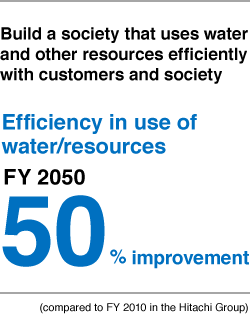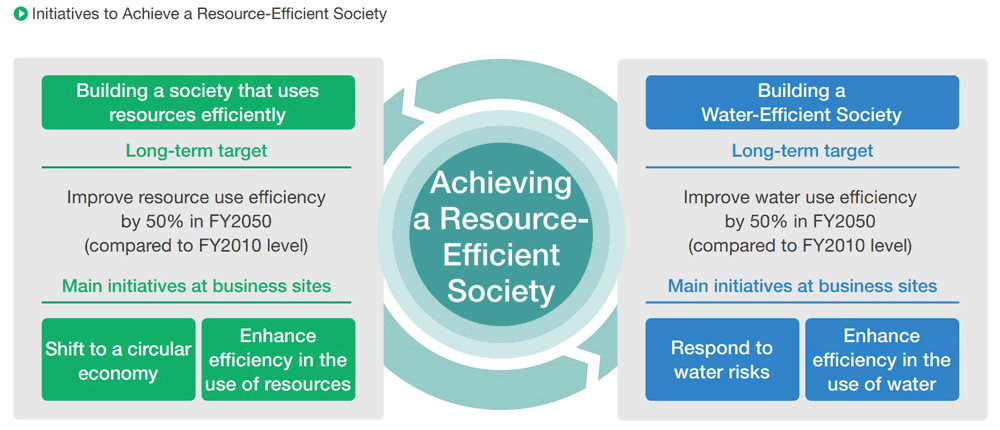

Environmental issues continue to intensify associated with increased economic and social ctivities within the conventional linear economy of mass production, mass consumption, and mass disposal. These problems involve resource shortages, water scarcity, tight supply and demand for energy, environmental pollution caused by increasing waste, global warming, and the loss of biodiversity. To solve these problems and create sustainable societies, we must shift away from linear economies to circular economies. Hitachi works together with customers and society to help build a society that uses water and other resources efficiently.

To help build a society that uses resources efficiently, Hitachi will advance a shift from the conventional linear economy to a circular economy. Therefore, we will focus on how we can continue to use resources and assets in our business activities and reduce waste, or even eliminate waste altogether, using three approaches: innovation in upstream product design, innovation in the product manufacturing process, and innovation of our business model.
For fiscal 2022, the first year of the Environmental Action Plan for 2024 (fiscal 2022–2024), we set a target reduction of 22% (compared with a base year of fiscal 2010) in water use per unit for manufacturing process and general daily usage in manufacturing sites. We improved on this target with a reduction of 27%. We reduced the volume of water used by 11 million m3, equivalent to a reduction of 45% compared with the base year. Our measures to reduce water usage included more stringent management of water intake using flowmeters, installing water pipes above ground for better leakage control, recirculating cooling water, and reusing purified waste water.
Click below for more details.